Sweet potatoes (Ipomoea batatas) grow as trailing vines and are usually grown for their starchy tasty tubers.
While they are called 'potatoes' they are not in the potato or nightshade family (Solanaceae), but are in the morning glory family (Convolvulaceae). This means that unlike potatoes (Solanum tuberosum), the leaves of sweet potatoes (Ipomoea batatas) are not toxic, and can also be cooked and eaten as a vegetable, making sweet potatoes a versatile plant to have in the garden as you can eat both the tubers and leaves.
Sweet potatoes are easy to grow, and develop edible tubers underground over the warmer months. Cuttings or slips taken from a sprouting tuber are planted in spring, and the tasty tubers can be harvested about 4 to 6 months after planting.
Read on to find out more about the different types of sweet potato and how you can use them in the kitchen.
Types of Sweet Potato
Four types of sweet potatoes are grown in Australia - gold, red, purple and white. Each of these has slightly different qualities in terms of texture, taste, and of course, colour.
Gold sweet potatoes like the variety Beauregard have golden skin and orange flesh. They are the most commonly grown sweet potatoes and have a sweet flavour. The variety Northern Star is a red sweet potato, and is the second most popular sweet potato. It has red skin and white flesh and has a sweet nutty flavour.
Purple sweet potatoes like Eclipse have white skin and purple flesh. The intensity of the purple flesh can be variable in purple sweet potatoes and the skin can sometimes take on some colour too. White sweet potatoes are not encountered as often as the other colours, and they tend to have a drier flesh that is mild and slightly nutty in flavour.
How to Use Sweet Potatoes in The Kitchen
1. Cooking with the leaves
Harvested young sweet potato leaves are tasty and can be cooked as a leafy green. They can be stir-fried or steamed, or added to soups and curries.
Important: Note that regular potato leaves are toxic and should NOT be eaten. If there is any doubt at all what type of leaves you are harvesting, then it is best not to consume them. As shown in the image below, the leaves of both sweet potatoes and regular potatoes can look similar, so do take care.
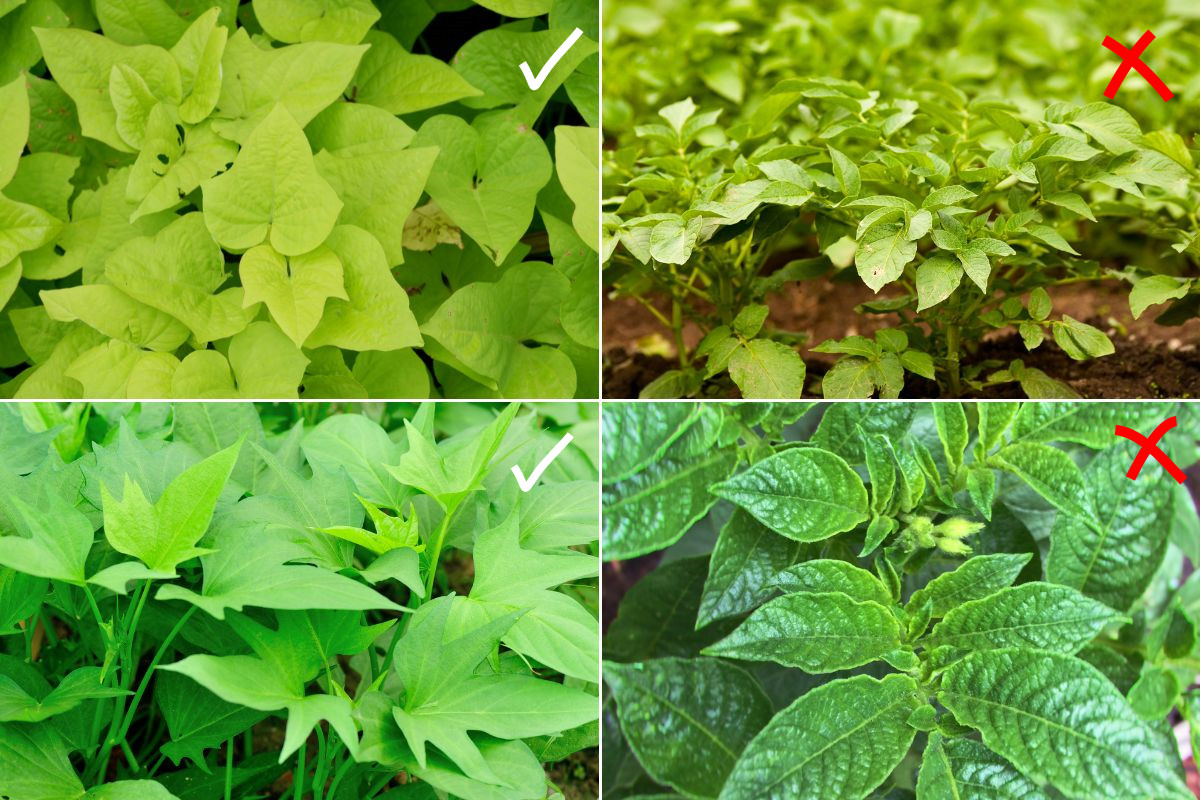 Left (top and bottom), Ipomoea batatas, sweet potato leaves; Right (top and bottom), Solanum tuberosum, regular potato leaves
Left (top and bottom), Ipomoea batatas, sweet potato leaves; Right (top and bottom), Solanum tuberosum, regular potato leaves
2. Cooking with the tubers
We are more familiar with cooking with sweet potato tubers and they are most commonly boiled, steamed, roasted or baked in the oven.
There are many ways you can use sweet potato flesh and in their most simplest form they are either boiled or roasted, cut open and enjoyed with a knob of butter melted over the top.
They can also be sliced thinly into fries or chips and either baked in the oven or deep fried. A light seasoning with salt after they are cooked brings out the sweetness, or for something different, try sprinkling them lightly with spices such as cinnamon, nutmeg, and cumin, or even chilli for a dash of heat.
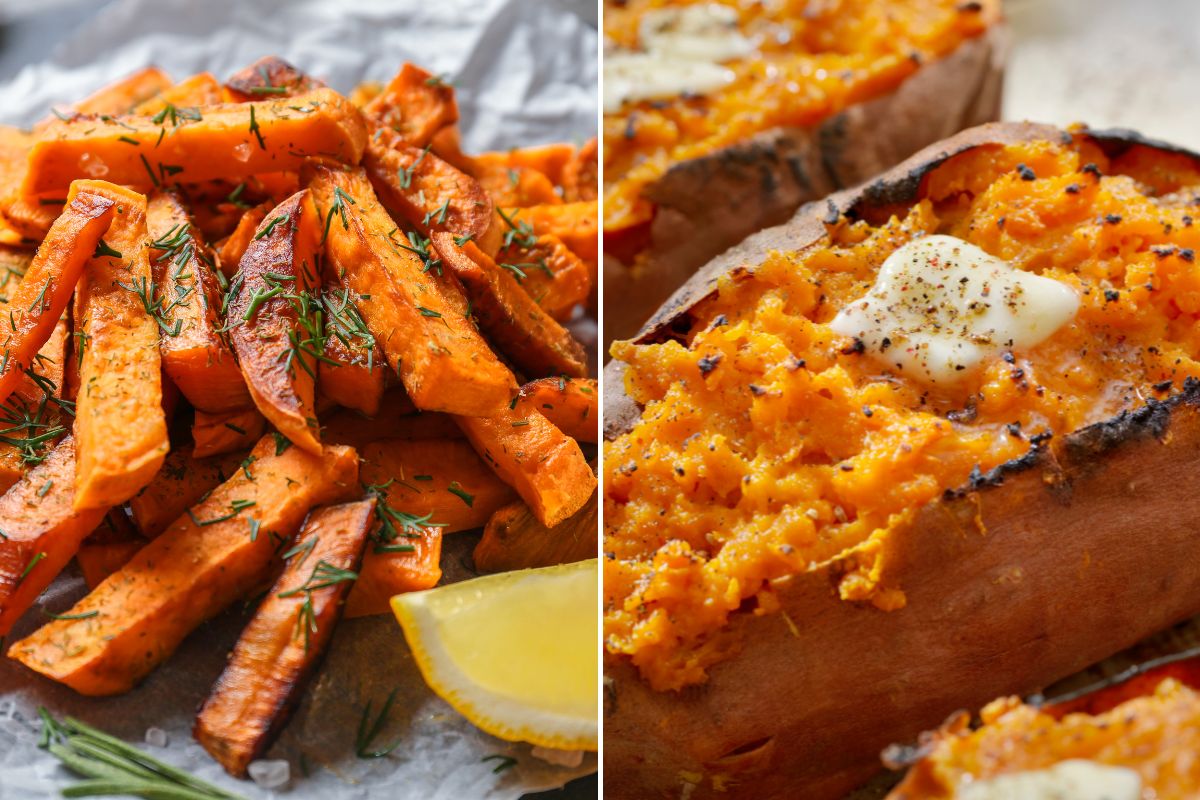 Sweet potatoes as fries or simply baked in the oven
Sweet potatoes as fries or simply baked in the oven
A hearty creamy soup can be made by sautéing some leek, onion and garlic in a little oil for a few minutes until sweet and softened. Add peeled (or unpeeled but scrubbed very clean), cubes of sweet potato and a dash of cumin to the pot and fry gently for a few minutes to bring out the flavour. Add chicken or vegetable stock and simmer until everything is soft and cooked. Take it off the heat and blend with a stick blender until smooth. Season to taste and add a little cream or butter to add some richness. Serve and enjoy.
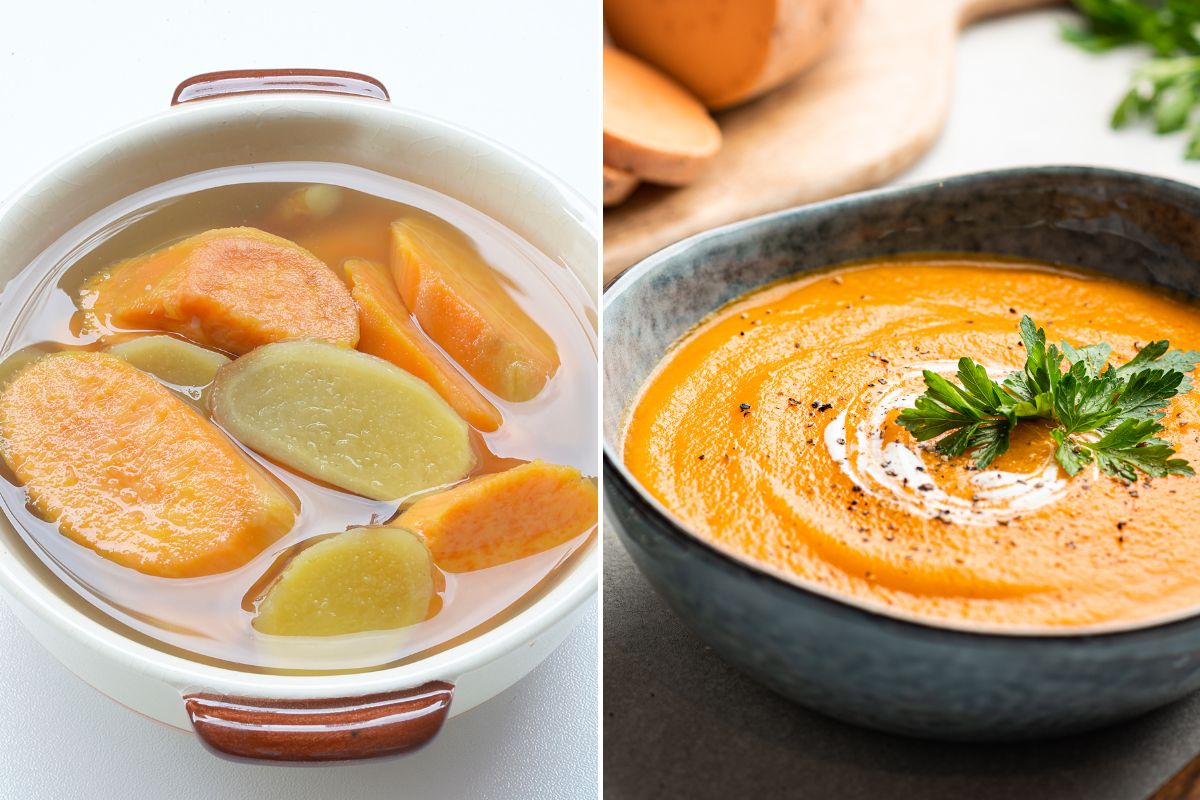 Left: Asian sweet potato and ginger dessert soup; Right: Creamy sweet potato soup
Left: Asian sweet potato and ginger dessert soup; Right: Creamy sweet potato soup
Boiled or roasted sweet potatoes can be mashed and used in other recipes such as dips and pie fillings, so, to continue your culinary journey with sweet potatoes, here are a couple of recipes that you can wow friends and family with at the next party or gathering. Enjoy!
Sweet Potato Pie
- 500g sweet potatoes
- 1 sheet ready-made frozen shortcrust pastry (320g)
- 125g butter
- 250g caster sugar
- 150ml whole milk
- 3 eggs
- Small pinch ground nutmeg (or a fine grating of whole nutmeg)
- ½ tsp ground cinnamon
- 1 tsp vanilla bean paste
Cook whole, unpeeled sweet potatoes in a pan of boiling water for 30 minutes or until very tender when pierced with a skewer or sharp knife. Drain well and leave to cool, then peel.
Preheat the oven to 180°C (160°C fan forced). Remove the pastry sheet from the packaging and allow it to thaw. Place pastry sheet in a 23cm tart tin or pie dish, trimming off excess as required. Line the pastry with baking paper and fill with baking beans or pie weights, and bake for 20 minutes. Remove the baking paper and beans and bake for another 5 minutes.
Place the cooked, cooled sweet potatoes into a large bowl. Add the butter and mash until it is smooth and there are no lumps. Add the sugar, milk, eggs, spices and vanilla paste, then whisk until the mixture is well-combined and smooth.
Pour the sweet potato mixture into the pastry case, and smooth the surface with a spatula. Bake in the centre of the oven for 50-55 minutes until the pastry and the surface of the pie is golden, and the middle is set. Remove from the oven and leave to cool completely in the tin or pie dish, then transfer to a serving plate and cut into slices. Serve plain or topped with a dollop of whipped cream.
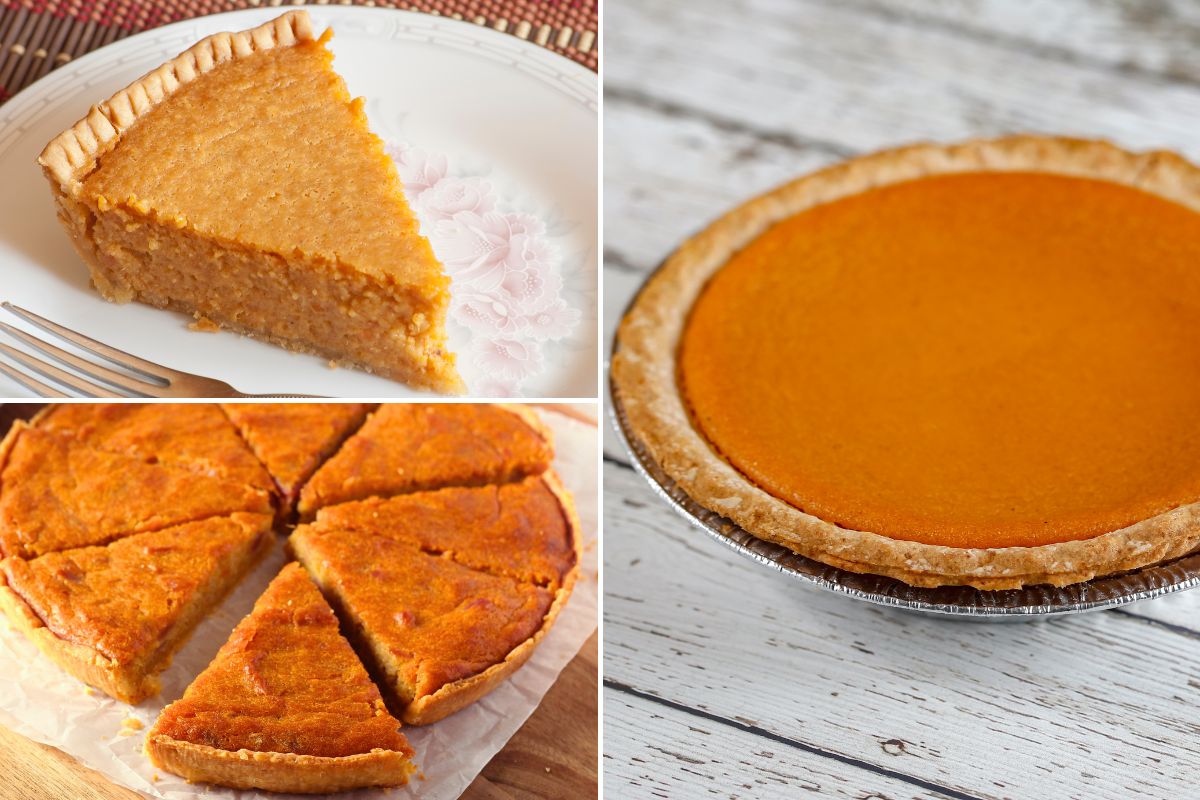 Sweet potato pie
Sweet potato pie
Sweet Potato Dip
- 1 sweet potato (roasted until soft, cooled and peeled)
- 4 tablespoons tahini
- 1-2 garlic cloves
- Juice of half a lemon
- ½-1 teaspoon honey
- 1 teaspoon paprika
- ½-1 teaspoon chilli flakes
- Black pepper and salt to taste
- Cold water, a few tablespoons
Combine sweet potato and all the other ingredients in a food processor and pulse until everything is blended together, adding a little water until you get the desired consistency. If you don't have a food processor, you can use a mortar and pestle to blend the ingredients. Scoop into a serving dish and garnish with a drizzle of olive oil and chopped parsley.
Sweet Potato Tubers for planting.
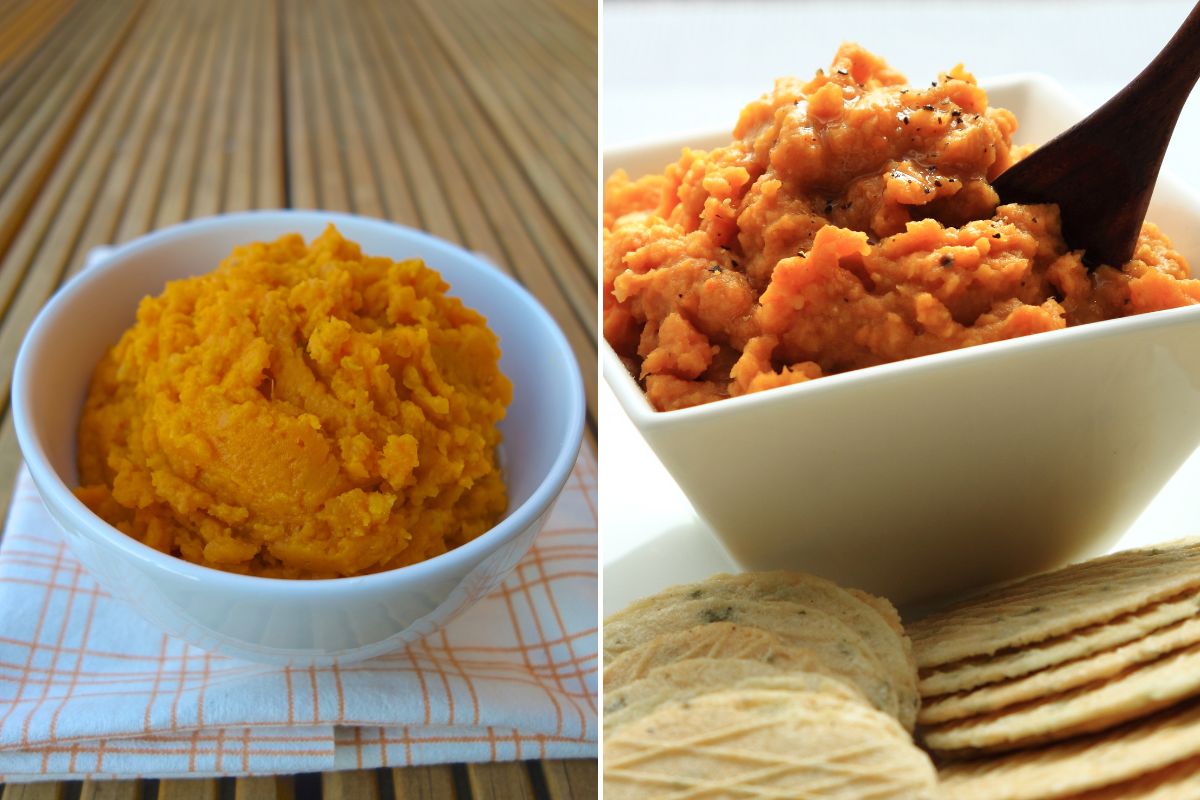 Sweet potato mash can be turned into delicious dips
Sweet potato mash can be turned into delicious dips





